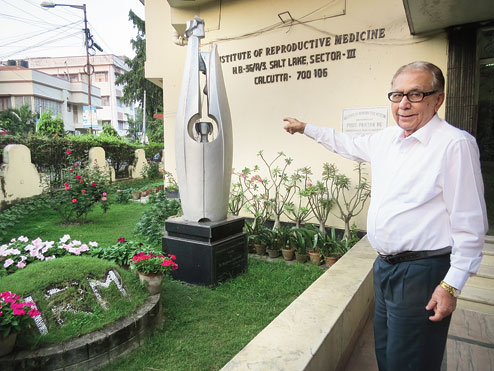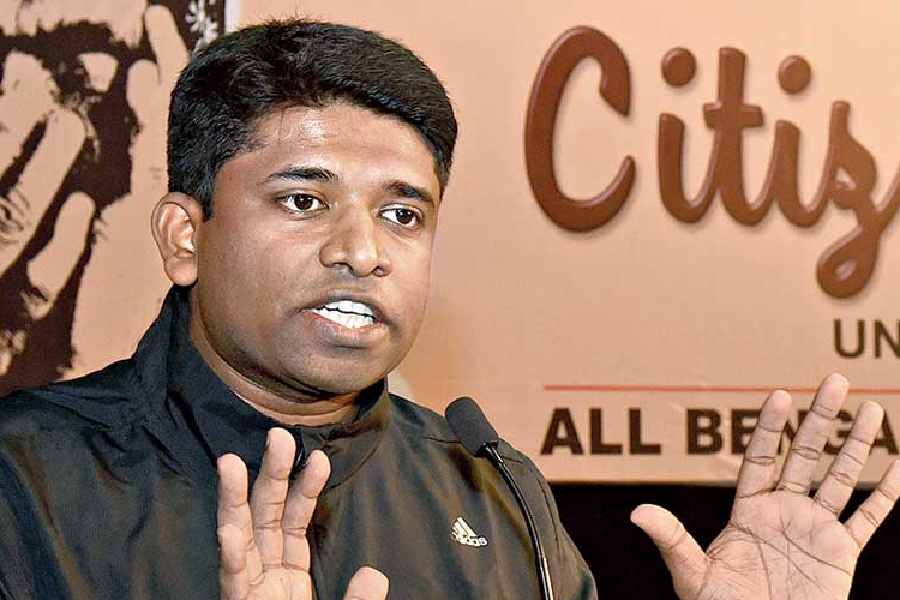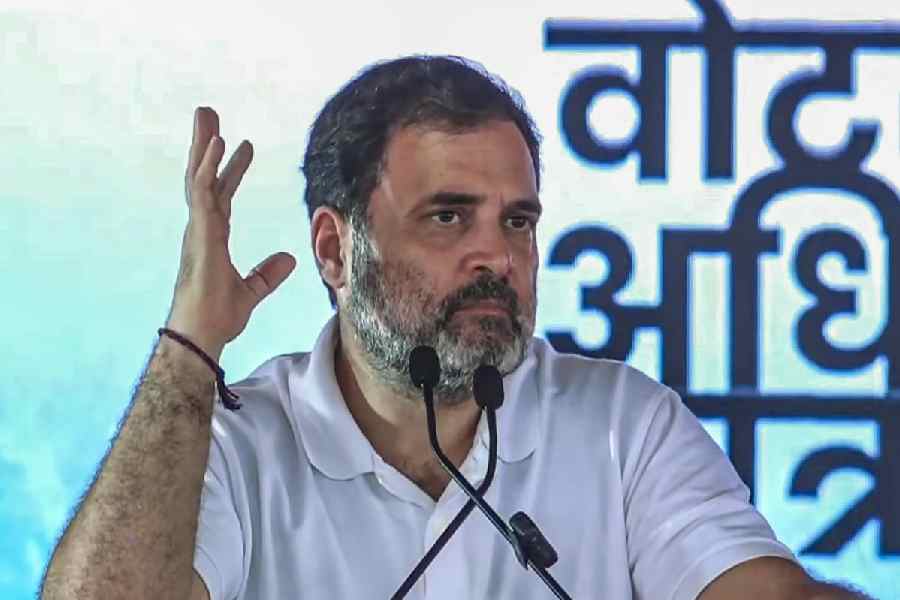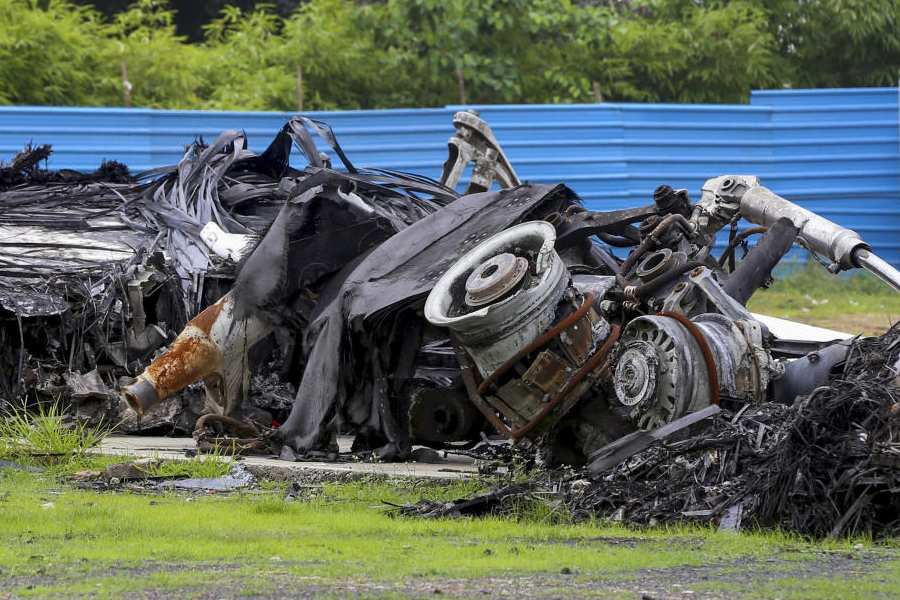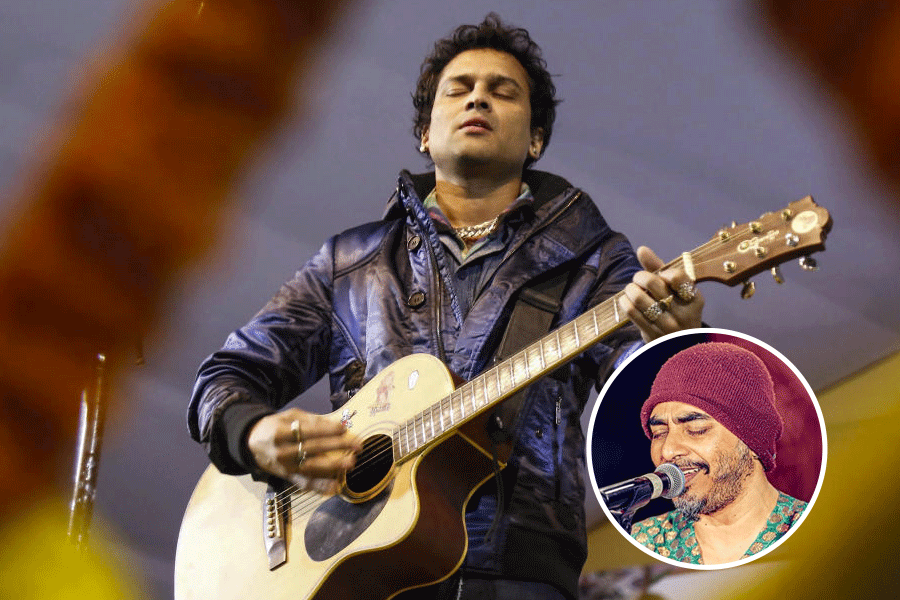Dr Baidyanath Chakravarty’s kindly face lights up on hearing that this correspondent was born under his care. “These are my most prized moments — seeing the babies I helped bring to this world doing well in life,” says the legendary gynaecologist who does not stay in Salt Lake but has made the township his karmbhumi. His waking hours, even at the ripe age of 88, are mostly spent at the twin branches of the Institute of Reproductive Medicine (IRM) in DD Block and HB Block.
“Thursday and Sunday are operating days at DD Block. On other days, I take a morning round there to check on the admitted mothers before starting chamber in HB Block, behind Susrut eye hospital,” he says.

Humble beginning
The in-vitro fertilisation (IVF) pioneer rose from humble roots by dint of academic brilliance. Born in Faridpur in undivided Bengal, he was the eldest of nine siblings. “My father, a signalman in the railways, had a transferable job. While the rest of the family travelled with him, from the age of nine I stayed on my own and studied in Chakradharpur, Bihar. Father’s friends gave me food when I could not cook.”
After he topped his school in matriculation, he wrote everywhere seeking help for higher studies. “Shyamaprasad Mukherjee called me and offered free studentship in Asutosh College on condition that I would come first in the first year finals. I agreed and kept my word.” A place to stay was provided by a Chakradharpur acquaintance who had got a job in Calcutta. “I was to tutor his nephew to earn my keep.” He could get by on his monthly scholarship of Rs 11.
In the graduation finals, Chakravarty reckons he must have done well enough to have got a university scholarship. Keeping the dearth of engineers in mind, he got himself admitted to BE College, Shibpur. “Then it struck me that staying at the hostel would mean giving up my Calcutta shelter. I thought of becoming a doctor.” His father wanted him to become a teacher instead, as medicine would be expensive. Still he applied and got through at both Nilratan Sirkar Medical College and Bengal Medical College (as Calcutta Medical College was called). He chose to enrol in the latter in 1947.
Five years were spent with the fear of a return to Chakradharpur in ignominy gripping him before every examination. “If I failed even once, my financial condition would not have allowed a second chance.”
In the MBBS final in 1952, he topped in the gynaecology and obstetrics paper. “That got me five gold medals and a lot of renown.”
When he was a house surgeon, he got married and had two children. But the marriage did not last over disagreements with his wife about him helping his parents. After his Masters, he left for England for an MRCOG (Member of Royal College of Obstetrics and Gynaecology).
In those days, Calcutta’s Medical College degree was recognised by the Royal College of Obstetrics and Gynaecology. “So I could send my thesis early. All I had to do was attend classes till I felt fit to appear for the qualifying examination.”
He had little time as his England stay was being financed by debts from friends. “I reached England on November 21, 1962 and sat for the exam on January 1 the next year.”
A “thick congratulatory letter” announced his results on January 28. But he had no money to return. So he took up a hospital job to raise his ticket fare and repay his loan. “Queen Charlotte’s And Chelsea Hospital offered me a post to teach non-British students who had trouble picking up the accent besides doing research for two years. But my father was about to retire. I could not be selfish,” he recalls.
Chakravarty had already joined the West Bengal Medical Service and gone to England on leave. “I had taken two years’ leave but came back in 10 months,” he smiles.
He was drawn to challenging subjects like fistula, cancer and infertility from the start. This is how he met Subhas Mukherjee and started working together in 1970 at Nilratan Sircar Medical College.

Focus on infertility
In the 1960s, there was a population explosion in India. Birth control measures like tubectomy and vasectomy were taking place. But if the child died, the parents needed the procedure to be reversed.
Simultaneously, in Europe, lifestyle was changing. Women were getting addicted to junk food and gaining weight, leading to pregnancy complications. “Infertility was suddenly a hot topic and research started on both the technology and hormones related to child birth. People started trying to fertilise the egg outside the body.”
The first test tube baby, Louise Brown, was born in July 1978 under Robert Edwards and Patrick Steptoe.
The research that the Calcutta duo had been doing had been dealt a blow when they were transferred — Mukherjee to Bankura and Chakravarty to Siliguri. “Still we came to Calcutta in the weekends to work. In the midst of this, suddenly Subhas announced that he had succeeded on his own and announced the birth of Durga, India’s first and the world’s second test tube baby, on October 3. But few people believed that the research could have been possible in a power cut-prone district without basic facilities.”
Mukherjee committed suicide in 1981. “He could not take the criticism. His death made me adamant to take the research forward.”
Chakravarty himself faced his share of doubters. “As a surgeon, I had by then successfully created a woman’s vagina.
When I lectured about it in Bombay or Delhi, people politely clapped but their lack of credence in research happening in Bengal was apparent. The same fate awaited my papers abroad. They initially caused excitement which fizzled out on learning that the researcher was from India.”
With a team of youngsters, that included Sudarshan Ghosh Dastidar, local MP Kakoli Ghosh Dastidar’s husband, Chakravarty started research in the garage of his CIT Road chamber. “Finally Imran, my first test tube baby, (the second in India) was born in 1986.”
This was a time of strict foreign exchange monitoring. “Only £5 was allowed for foreign travel. Importing machines and components were next to impossible. Little things like a single-use embryo transfer catheter, made of plastic, which cost £5 in England would have an import duty of £300 slapped on it. So it wasn’t until 1989 that the second test tube baby was born in my hands. But when Manmohan Singh liberalised the economy, I could deliver four test tube babies a month.
Finally people stopped doubting my work.”
By then, Chakravarty had retired from service, pumping his retirement benefits into acquiring a plot for a research facility. “A deputy secretary who was my patient helped me get a four-cottah plot in DD Block for Rs 40,000 and permission for a five-storeyed house.” The building was built over four years and IRM was inaugurated in 1989.
Such was the flow of patients that he needed a waiting area. “I offered a day’s free service every week to the Sub-divisional Hospital across the road in exchange of space to seat the patients. But that did not happen.”
A Mumbai pharmaceutical company finally offered him interest-free loan. “Jyotibabu (Basu) gave me a 10-cottah plot in 1999 to build our second facility. I love working in Salt Lake with its open spaces and wide roads.”
IRM’s embryology course fetches students from across the country. “Two post-doctoral students come through a national selection in Delhi. Then there are PhD students from Indian Institute of Chemical Biology, IIT Kharagpur and Bose Institute.”
His wife Manjusree — whom he met and married on his return from England — is also a doctor and gives him a hand. “I have delivered more than 4,000 babies through IVF. I am still neck-deep in research.” Six of his papers have been published in journals in 2016 itself. The latest feather in his cap is an honorary membership of the International Federation of Fertility Society.
Beyond medicine
An Uttam Kumar fan in his youth, he has quit watching films and TV for the last 30 years. “My only reading interest now is medical literature.”
He makes an exception for cricket. “For two hours before going to bed, I watch highlights of matches. Virat Kohli and Ashwin are such good boys,” smiles the man who had watched many a match live at Eden Gardens during his days as a house surgeon in Eden Hospital, Medical College.
Recent reports of child trafficking pain him. “This is no solution to infertility — neither desirable nor acceptable in a civilised society,” he reflects. IVF at his facility costs between Rs 1.2 and Rs 1.5 lakh. “Science has to improve to keep up with demands of the times. To predict and prevent is my motto as a researcher,” says the pioneer who delivered the keynote speech on ‘Healthcare in India: Inspiring possibilities, challenging journey’ last week at Infocom, India’s top business, technology and leadership expo from the house of ABP, which publishes The Telegraph.
Do you know Dr Baidyanath Chakravarty?
Write to The Telegraph Salt Lake, 6 Prafulla Sarkar Street, Calcutta 700001 or email to saltlake@abpmail.com

